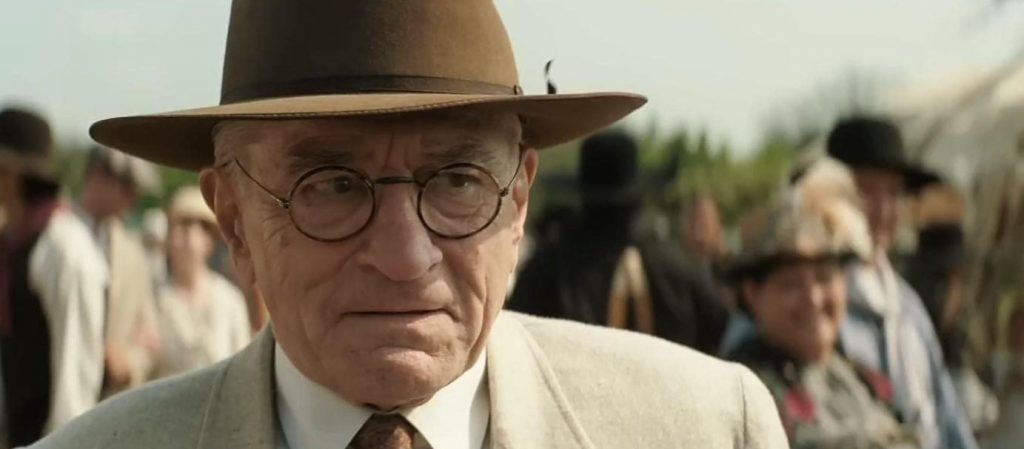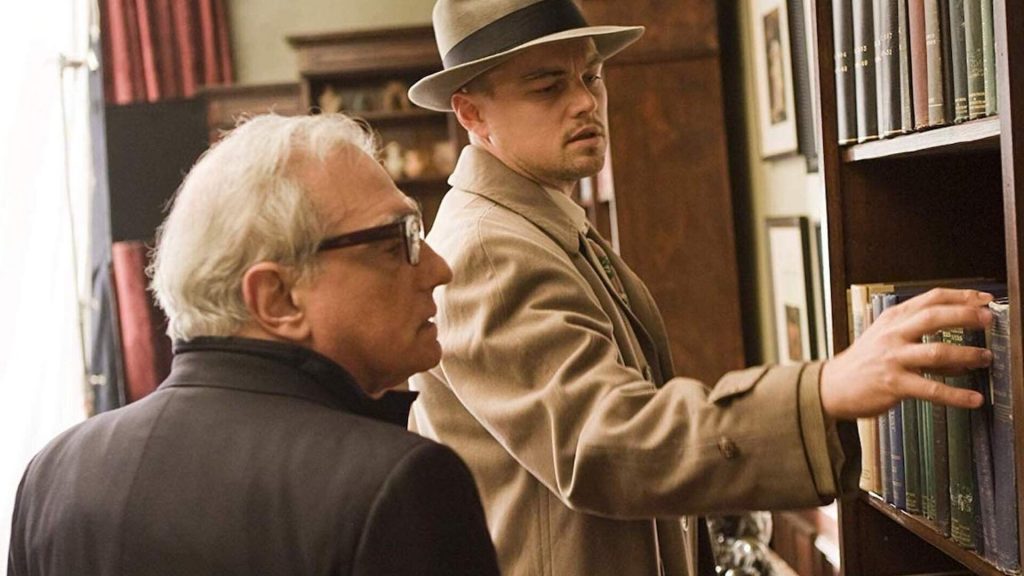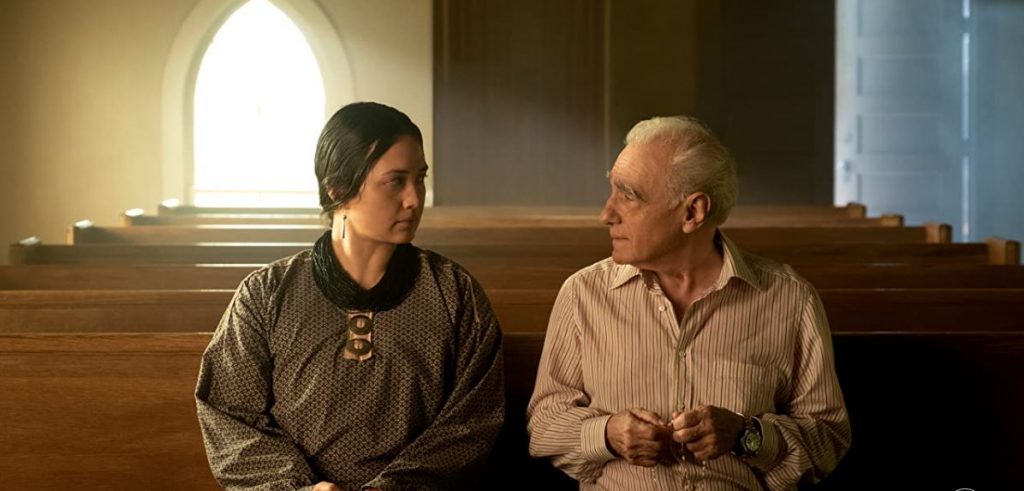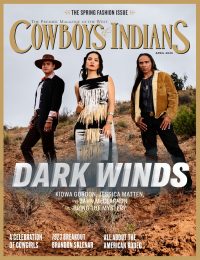Martin Scorsese’s epic Western drama received a lengthy standing ovation at its world premiere.
The first reports out of the Cannes Film Festival suggest Killers of the Flower Moon has not merely lived up to its advance hype — it has far surpassed expectations.
Martin Scorsese’s epic period drama starring Leonard DiCaprio, Robert De Niro, Lily Gladstone and Jesse Plemons received a nine-minute standing ovation Saturday after its world premiere screening at Cannes. And critics have heaped high praise on the film, which focuses on the notorious “Reign of Terror” that targeted newly oil-rich Osage Native Americans in 1920s Oklahoma.
Some observers pegged DiCaprio as a likely Oscar contender for his complex and compelling performance as Ernest Burkhart, the tragically pliant nephew of corrupt cattleman William Hale (De Niro), who plays a vital role in his uncle’s campaign to relieve Osage people of their land — and, in some cases, their lives. As the drama proceeds, Burkhardt is torn between loyalty to Hale and concern for his wife Mollie (Gladstone), an Osage woman who has inherited an oil fortune.
Plemons co-stars as Tom White, a former Texas Ranger turned agent for the newly formed FBI, who leads an investigation into the Osage murders. Other members of the cast include John Lithgow, Brendan Fraser, Cara Jade Myers, JaNae Collins, Jillian Dion, Tantoo Cardinal, Sturgill Simpson, Jack White, and Jason Isbell. Paramount will open the Apple Original Picture in a limited theatrical run on Oct. 6 before expanding on Oct. 20.
Here’s a sampling of the early reviews:
David Fear of Rolling Stone: An adaptation of David Grann’s 2017 true-crime bestseller, Killers of the Flower Moon would be a big deal regardless of who was making it. That this is the latest from Martin Scorsese, starring both Leonardo DiCaprio and Robert De Niro — acting together for the first time in one of the director’s movies — and the closest thing he’s made to a genuine Western, has caused it to be viewed less as a film than as a potential earthshaking event. A single still of DiCaprio and Lily Gladstone sitting at a table, her staring sideways at him as he blankly stares heavenward, was the only hint we had for months regarding what was in store; film nerds studied it like the Zapruder footage for clues. Anticipation mounted. Questions were abundant: Would it focus more on the community’s response to the killings, or the F.B.I.’s investigation? Was this going to be Scorsese’s corrective to a genre that’s done wrong to Native people for over a century? Or would it turn out to be another well-intentioned white savior story? What’s the deal with DiCaprio’s jaw?!
“We now have answers, and can confirm that the end result was indeed worth the wait. Structured as the sort of throwback, big-picture epic that characterized ambitious moviemaking in the 1970s and early ’80s, Killers of the Flower Moon is, at its core, a love story. But it’s also a mystery, albeit not one with simplistic whodunnit solutions; a highly gothic take on the white-hat horse operas of yesteryear; a star vehicle, featuring a career-best performance from an actor whose talent too often gets eclipsed by his celebrity; a continuation of a sui generis 50-year collaboration between two artists/coupla guys from Little Italy; and an indictment of white supremacy, then and now. Above all, it’s a Martin Scorsese picture, brimming with reverence for a culture that survived a horrible trauma as it is filled with exhilarating flourishes, film history references, and explorations of the fault line between the sacred and profane. And yes: It’s a masterpiece.”

David Ehrlich of IndieWire: “[A] testament to Scorsese’s enduring genius for bad romance; no storyteller on Earth is better at blurring the fine line between love and exploitation, whether between two people, or two peoples. It might be a bit reductive to think of Ernest and Mollie’s relationship as a metaphor for that between white America and the Osage Nation, but the anguish and confusion that Scorsese wrings from it is so powerful that it practically demands to be considered in such a broad historical context. At the very least, it resonates within a context of Scorsese’s own: as De Niro’s puckered Hale plots the destruction of the same Osage Nation families who saw him as a benevolent intermediary to white America, you might hear echoes (or precursors) of the same disassociation that coursed through the likes of Casino and The Wolf of Wall Street. I was reminded of the last thought that went through Ace Rothstein’s head before a car exploded under his feet: ‘When you love someone, you’ve gotta trust them. There’s no other way. You’ve got to give them the key to everything that’s yours. Otherwise, what’s the point? And for a while, I believed that’s the kind of love I had.’
“But it’s not the kind of love he gave, or the kind that Hale gives here to a people who are in dire need of a white man with their best interests at heart. What they fail to realize is that Hale is convinced the Osage Nation’s time is over, and that he’s just an agent of fate who’s helping to unburden them of their wealth before they settle into the past. With the help of Ernest’s brother (Scott Shepherd) and the rest of his lackeys (a deep bench of great faces, including Sturgill Simpson and the morbidly hilarious Louis Cancelmi), Hale kills the Osage with the indifference of a tiger mauling its prey.”

Tomris Laffly of The Wrap: “From the crime and gangster infested GoodFellas to The Wolf of Wall Street centered on vampiric stock market thieves, master director Martin Scorsese’s filmography has often concerned itself with American sins driven by infinite greed.
“So it is perhaps no surprise that Scorsese would be the one to cinematically adapt David Grann’s searing true-crime book, Killers of the Flower Moon: The Osage Murders and the Birth of the FBI, for the big screen, uncompromisingly illustrating a forgotten chapter of one of America’s original sins: white people’s coldhearted genocide of Native American tribes.
“In that regard, his Killers of the Flower Moon is vast and vital in its scale, purpose and emotional scope, a Western-thriller and ensemble piece that is every bit a Scorsese crime picture as one can dare to imagine.”
David Rooney of The Hollywood Reporter: “Based on David Grann’s acclaimed nonfiction book about the Osage Murders, as they became known, this is a sprawling, densely plotted work that demands a lot of its audience. But the three-and-a-half-hour running time is fully justified in an escalating tragedy that never loosens its grip — a sordid illustration of historical erasure with echoes in today’s bitterly divisive political gamesmanship…
“Money and violence have been prominent themes in Scorsese’s filmography and for every facile charge ever lobbed at him of glorifying or glamorizing career criminals, he has usually delivered retribution to his antiheroes. But there’s a different, more chilling feel to the reign of terror depicted here, a trail of slaughter that weighs heavily on the heart and mind at every step. There’s also a suggestion of a filmmaker reflecting on guilt and atonement, a notion strengthened by a strategic — and unexpectedly moving — cameo from the director.”

Pete Hammond of Deadline: “DiCaprio is superb here, and it is a tricky role because he is doing something very bad, getting himself in deeper but also must convince us there is more there than meets the eye. De Niro is deliciously slippery here, kind of a Donald Trump-like figure who believes he is helping the people who seem to revere him, but of course is really just exploiting them while keeping a smile on his face. Gladstone is just terrific, playing Mollie on several levels and making us believe every beat of this performance. Her casting here is perfect. Although his role is truncated from what it is in the book, Plemons is right on the money, almost an amusing Colombo-like shrewd figure who is trying to get the answers. The picture was already alive before he shows up, but it gets even more so when he does. A large group of Native American actors make up so much of the outstanding supporting cast including veteran Tantoo Cardinal as Lizzie Q, Mollie’s mother, as well as the trio of Cara Jade Myers, JaNae Collins, and Jillian Dion (especially good) as her sisters.”
Peter Debruge of Variety: “So how does Scorsese justify the running time? Shooting the film on location in Oklahoma, he and [director of photography] Rodrigo Prieto immerse audiences in the oil-rich community, featuring street races and downtown parades, plus a stunning scene in which King’s cattle can be seen burning in his fields. Picnics and powwows provide more than just production value, situating this incredible story within a singular place and time. ‘Can you find the wolves in this picture?’ a vintage Osage history book asks, encapsulating the challenge Scorsese sets for his audience.”












